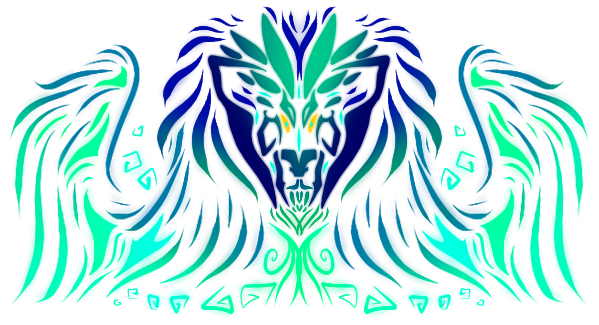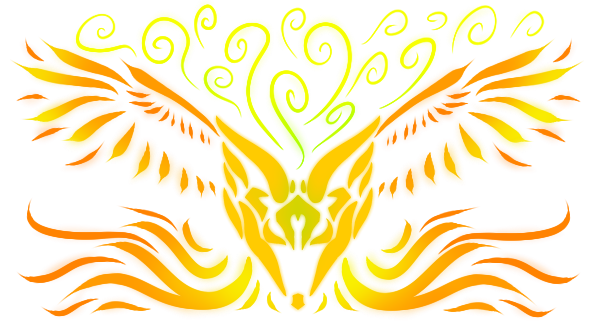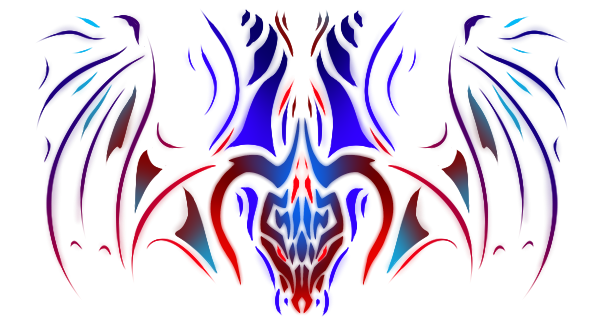Military
Unique and terrible, the various militaries of the Kingdoms of demons are wreathed in Kurai's storied culture and made to fit each Kingdom, attuned to its various needs. Where War holds sway over legions of samurai, Pestilence controls venomous warrior-monks and poison masters, Death terrifyingly efficient assassins, and Famine their sheizi ninja and mages.
Death's Miltary
Though always powerful, Death's military blends tactics from its own assassination-based culture, and War's relentless samurai.
Orders of the Military
All of Death's Orders are powerful, filled with assassins and warriors of great prestige. The first four Orders are of equal status, and all work under Kenshi, while the legendary Zeishin only reports to its Lord. All demons in the orders are regularly high class demons, n'vaen or lethaos of considerable power.
Order of Maeros - Magically attuned, the Order of Maeros is the smallest Order by far, but are strong magic users growing ever stronger with continued training. Light mages work both offensively to destroy the body, and defensively with ward and healing magic, while attacking mages kill in stealth or otherwise to assassinate their targets with a variety of means.
-- Tynki - The Tynki is considered a special operations unit of the Maeros. It is the best mages of the best in the Order, and those known for their most confirmed kills. These are only appointed by the Lord or by the Order leader, and hold a reverence among their fellows unlike many others. It's said that mages from the Tynki originally uncovered the secret of the demon healing gene, a rapid rate of healing that has become one of the Kingdom's most closely guarded secrets.
Order of Kotarasi - This Order is an Order of warriors and skilled assassins, named after and in honor of the prince who lost his name. The Kotarasi has no fear of dying by the blade or killing with one, and their fearlessness is spoken of far and wide. Utilizing many different forms and techniques, the members of this Order are held to a nearly impossible standard of weapon mastery, and spend much of their free time honing their skills.
-- Ichin - The Ichin are, like the Tynki of the Maeros, the special operations division of the Kotarasi. Known otherwise as the Fangs of Lethias, these assassins target only those most important to slay, and are strictly controlled by the Lord only. They move in utter stealth, and very rarely fail in their tasks.
Order of Chi - Often considered the weakest Order, it is where soldiers are put if they don't meet the high requirements of all the other classes; thus, it is the largest, though least specialized, and a force to be reckoned with. Best known as a siege engine for the Death military, when in open combat they take War-style weaponry and surround their target, crush the walls protecting them, and open a path for other Orders to go in and finish the job.
-- Kechin - Fierce and proud warriors of the Chi who act as leaders within the Order. Though eligible for transfer, most do not take it, preferring their current station than having to climb ranks all over again.
Order of Yha'mi - The largest Order of assassins the Death Kingdom has, and one of its most dangerous, said to be a match for the Onyx Faction of other Realms in all of its might. Many members are more animalistic in their killings, brutal and savage, and most assassinations are used to send a message to enemy forces and a warning of what is to come. This group is often mistaken for the Zeishin, due to their workings in stealth.
-- Jakiru - The strongest and most horrifically feared assassins Death has to offer, aside from the legendary Zeishin itself. Only a handful in number, they are nevertheless greatly skilled, and often kill without any trace. It's said a single Jakiru assassin has twice the skill of any Ichin warrior, only topped by the legends themselves.
Order of Kenshi - The highest ranking Order, fighters known for complete loyalty to the Lord and their Kingdom. They only live to serve and don't hesitate to kill if ordered to. They are the leaders of the military, and the most capable warriors and assassins that hail from anywhere else, and any other Order. To gain a place in this Order, the Lord himself will test your skills and determine if you are fit for the task.
-- Khiba Serving as the military police, the Khiba are Death demons trained in the art of the War samurai who hold strict law and order over all. They answer to nobody but the Lord and the legendary Zeishin, and often serve as judge, jury and executioner in a very short period of time.
The Zeishin An Order that is only whispered of in secret places, thought to be only rumors and mist, though one that is very real and very deadly. Only the Lord knows of all the members, knowledge that is hidden even from the rest of the group. There is no crest or marking to show all the members. The Zeishin is a phantom conglomerate that works secretly within the other Orders, blending seamlessly with them until such time as they are needed to break away and do another task. Also a part of this esteemed Order are the fabled Reapers that were made long ago. These Reapers are powerful Death demons who are able to tear souls from living bodies with exceptional ease, a thousand times more deadly than the draconic souleaters, and creatures able to blend in with their targets without detection.
-- Ki-Kamishio - This group is known to outsiders as only the Reapers, a horrific unit of demons specially trained and changed, serving as one of the most deadly soldiers in the Kingdom's history. All are taken as children and forced through a ritual that strips them of most of their sense of smell and taste to make what is considered the ultimate apex predator within the Kingdom that thrives on souls and blood. Through a necklace that binds them to Lord and goddess alone, they are monsters who destroy whatever they are pointed at. The curse is strongest with them, as they belong neither to the living nor the dead, and must not only kill but devour souls to survive. Very few Reapers exist, due to the complex nature of their creation.
-- No-Kamishio - More common are the Reapers - called the Demonic Reapers by most - that are non-demon creatures joined with the souls of deceased demon Reapers and changed to allow that Reaper to continue to serve even beyond death. These non-demons can be anything from humanoid to animalistic, and result in severe physical changes, the most noticable being color. They all appear to change from whatever their normal coloration is to white, black, and red, and have earned the name 'bloody deaths' because of it. More information on them may be found in the species subtypes page.
-- Chi Jakiru - This group consists of primarily wolf shifters, personally trained and - in some cases - raised by the Demon Lord. They are extremely loyal to the Lord's cause. They are masters of killing in both demon and wolf form, and it can be said that they are almost more animal than demon. Leadership is decided within the Chi Jakiru itself, and any alpha that cannot hold his dominance is ousted and then slain.
Clans
Clans play an important role in the Death military; not only kept for their skills, Clans are where most of the demons of Death live. There are rules each Clan follows which are used to help benefit the Kingdom. For instance, any child born a shifter is reported to the Lord, and then the family is allowed to live near the castle. This is so the child can be raised in the Death demon ways, as well as possibly becomes a member of the estimable Chi Jakiru within the legendary Zeishin itself.
The leader of the Clan is also forced to report all children born, and all children are subjected to training in basic military tactics and how to kill quickly and efficiently. Any Clan not helping the next generation survive is failing their task and will be under penalty of death if the Lord finds out. No Clan leader has to be in an Order, but each Clan does have to work with the military and help them. Most Clan leaders are encouraged to join the war and most do as they are loyal to their Lord. The Clans will then be sorted into an Order that best fits their specialty and made to fight. Some Clans, like Silus, are used to support and help the military become stronger and more effective.
Silus--;
Leader: TBA
About: The purpose of the Silus clan is to be inventors. They invent anything and are very skilled in this process, from weapons to spells and everything in-between. It is said they can make anything they set their minds to, and they are often commissioned for dark magic spells, items, and rituals by the military before a coming war. Silus is well known and feared among Death for it has magic and inventions that some can only dream of.
Famine's Military
The military of the Kingdom of Famine is a strong, magically-based force, with three primary groups; the mage-led Order of Hikari, the Sheizi Shinobi, and the royal pack of hellwolves, called the Kuhtals. They focus on swift offense and stealth, with little in the way of defense, save for magical wards and shields. The hit-and-away tactics of their sheizi ninja are well known and feared, as well as the magical prowess of their specially-trained mages and sorcerers. They're known to pull a mixture of tactics from both Death's assassins, and Pestilence's ninja, refining and enhancing both with magic.
Orders of the Military
Order of Hikari - The Order of Hikari, also known as the Mages of Light, are a class of skilled mages in Famine's primary force, specializing in both offensive and defensive spells and skills. Well-rounded, they make up the majority of Famine troops, split into several classes based on skill. Much like the Order of Mages in Felnova, these demonic hikari are classed from master sorcerer through apprentice mage, though anything less cannot be considered as a true part of the established ranks. Most common are those who have mastered elemental and non-elemental offensive spells, with the second common being barrier- and ward-masters; the third, and most uncommon, are the core healers. Most hikari are n'vaen.
-- Lion Claws - The Claws of the Lion are a specifically-skilled subset of the hikari who summon and control vast, terrible monsters. These summoners are very skilled and very powerful, equaling master sorcerers in rank; most of their beasts are created from energy alone, and can be released to devastating effect. To become a Lion Claw, one must show absolute mastery of all they have studied, and must achieve their topmost rank. Thus, Lion Claws are a very small group, never reaching over ten to twenty individuals at any one time.
Sheizi Shinobi - Famine's next most common soldier, a versatile and skilled group of ninja-mages who specialize in stealth and magical prowess. Their primary tactic is to seek out and destroy key targets, unseen, while the Order of Hikari takes the full brunt of the frontal assault. Groups of these ninja will be sent behind enemy lines, utilizing stealth and deceit. They are able to accomplish most tasks set before them, including assassinations, sabotage, disarming, and a multitude of other things. When confronted, members of the sheizi are very difficult to kill, and can often outmaneuver an opponent with ease. They are known for their accuracy and speed, those leaders of the shinobi regarded as legends within their Clans.
-- Dreadflowers - A certain few within the sheizi who are gifted with a powerful shifting gene, enhanced and strengthened by magic. Legendary among the rank and file, these ninja hide among their fellows and only reveal themselves in times of great need. They may shift into monstrous, demonic lions, their manes flickering with the color of their reiatsu. It's said that a dreadflower's feline form can reach eight feet at the shoulder, though no larger has ever been recorded. "When the dreadflower blooms" is a common phrase within the Famine Kingdom, regarding an event that may never come to pass, based upon the rarity of both station and power.
Kuhtals - The largest and most prolific of all Famine's war-packs, the royal-bred hellwolves of the Kuhtal lead the most common unit in the Kingdom's military. A common strategy is to send wave after wave of hellwolves at the enemy, bringing together the various hellwolf packs into one massive one led by the members of the elite Kuhtals for a devastating attack. These hellwolves will lead the charge as the mages and sheizi ninja come after, and will often form entire assault groups on their own. Nimble and swift, the Famine wolves strike hard and fast, driving a wedge into enemy ranks, cleaving through even the most well tended of defenses.
-- Lord's Fangs - Elite among the elite, the leaders of the Kuhtal. Called the Lord's Fangs for their savagery and glory in battle, these hellwolves are renowned and praised, often gifted with intense magic. When becoming one of the Fangs, a custom set of hellwolf armor, generally darksteel or gemsteel set with emeralds and peridots, will be made by the Kingdom's best blacksmiths.
Clans
The Clans of Famine are generally very nomadic, somewhat small, with a heavy emphasis on the training of their ninja and mages. Most Clans hold at least a small group of sheizi, who come to the Fortress to get the blessings of their Lord when they complete their training. Generally, a sheizi ninja in any Clan will take five to seven years to become full-fledged, and after that point, they will be available for use in the Famine military. Three Clans are most prestigious among them - the Valefor Family, the Ixion Clan, and the Line of Ifrit.
Valefor --;
Leader: Jarln (NPC)
About: The most powerful of all of Famine's Clans, though not as large as the Ixion Clan, the House of Valefor is a noble family of n'vaen demon who are well known for their training in sheizi ninja. As the second largest Clan, they have more than both Ixion and Ifrit, and have specialized training methods to maximize their shinobi's speed and skill. Three times a year, their students will graduate, well trained and feared for their physical and magical prowess.
Ixion --;
Leader: Kurojaki
About:The Ixion Clan is the largest of Famine's Clans, and is known for their ferocity and brutality to outsiders and other Kingdoms and Kingdom Clans. They train their own knight-class mages who take much of their skill from War samurai, dressing in thick armor that's colored dark green, black, and gold. Ixion is the one used primarily for intimidation, sending out mage-soldiers from their settlements over the Bloodsoul Range.
Ifrit --;
Leader: Praneli (NPC)
About: The smallest of the Great Three, the Line of Ifrit is composed of a single family, not thirty individuals big. However, the members of this family are Famine's most skilled mages, and many seek them out as they wander with the intent to gain knowledge over most magical skills. They are the progenitors of the Lion Claws and the ones that gave the dreadflowers their enhanced shifting abilities, holding a place of honor at Lord Slain's right side.
Pestilence's Military
The Pestilence military places a heavy emphasis on flexibility, both in their tactics and in their battle line. Rather than meet their foes head-on, they tend to keep their distance as much as they can, and strike from range with poisoned weapons, preferably from ambush. A common tactic is for them to withdraw behind a mage-spawned toxic fog, or spread said fog all over the battlefield, taking advantage of their resistance or immunity to said poison.
Orders of the Military
The Scourge - The Scourge is the elite Royal Guard of Pestilence Castle. A small cadre consisting entirely of N'vaen demons who have proved their loyalty, power, and sense of duty. Every member of the Scourge outranks even the highest members of the Pestilence Host. Members of the Scourge typically fight in groups of three, fighting back to back so they don't expose any openings to their foes.
-- Orphethas' Chosen Members of The Scourge who have taken special oaths before the great statue of Orphethas in Pestilence Castle. These demons hide within the standard ranks of the Pestilence Host, and reveal themselves only after battle has been joined, either targeting enemy commanders or rampaging through lesser enemy troops.
The Host - The Host is the collection of rank and file demons who march under the Pestilence banner. The Host is made up of soldiers called up by various clan leaders in times of war, or when their banners are called by their Lord. Said clan leaders comprise the Pestilence Nobility, and directly rule over land granted them by their Lord. This makes the Host a myriad fighting force with each clan bringing its own distinct fighting style to the field. A few of these clans, while not as prestigious as either Iga or Koga, still stand out among the rest.
-- Saishi - A clan of warrior monks from the mountainous regions of Pestilence territory. Ascetics who deny themselves all but the most spartan of possessions to better focus on the nature of Orphethas. As a result, many of these warriors can shrug off all but the most vile of venoms, and those they can't shrug off can be purged through a period of undisturbed meditation. The most enlightened of these monks are capable of poisoning a target with a mere touch.
-- Shoukan - This clan has a reputation for accepting disgraced demons into their ranks and offering them a chance to redeem themselves in battle. These atonement-seeking demons are renowned for their ferocity on the battlefield.
-- Shino Kaze - This clan has a high number of mages in its ranks. These mages specialize in poisons and diseases, and inflicting them upon the enemies of Pestilence. Mage or not, this clan also specializes in mounted combat, whether aerial or terrestrial, and are exceptionally skilled at hit-and-run tactics.
Harriers - The Royal Pack of Pestilence. Hellwolves tasked with stalking the field of battle, seeking to disrupt organized lines with their venom before withdrawing to let the poison do its work, or targeting archers and mages. Due to their great stamina, they harass their enemies relentlessly.
Clans
Pestilence Clans, when called to war, march beneath the banners of their own nobles, acting largely as they see fit. The two largest, most prestigious Clans are Iga and Koga. Clan leaders and high-ranking members are given artifacts that allow them to remain in direct psychic contact with Vortigern.
Iga --;
Leader: Yukikaze (NPC)
About: The Iga Clan specializes in espionage, sabotage, and infiltration. They are often tasked with infiltrating rival kingdoms and reporting back on troop movements, settlement locations, local geography, and typical weather patterns. During war, they seek to disrupt supply lines and communication, poison supplies, and assassinate key individuals, often disguising themselves as members of the target kingdom.
Koga
Leader: Xavanth
About: The Koga Clan specializes in ambushes, and counter-spying operations. Outsiders wandering around in Pestilence territory will often be shadowed by Koga clan-members without knowing it, with the Kogas using their superior knowledge of their homeland to remain hidden from sight, sense, or magic. During war, they often set up ambushes, or obstruct lines of advance with debris or traps, and relentlessly target enemy scouts or spies.
War's Military
A proud and strong military, based around an honor system that leaves very little room for any error. Absolute loyalty to their Clan leaders and Lord is often carried to extremes, such as fighting to the death in a hopeless cause to fulfill one's orders, or committing suicide if any warrior feels they have disgraced their Lord or families.
Orders of the Military
Tsuikara - The Order of Tsuikara consists of all the ground troops, and is the largest and most imposing force that War has to offer. While not heavily skilled in magic or incredibly strong, but they work well in numbers. In Tsuikara, the non-samurai infantrymen are nevertheless taught rigidly in the Way of the Samurai, and held to a strict code of honor; loyalty ranks above all, and disloyalty is often penalized with death. Those who survive long enough are generally inducted into other, stronger Orders, or become a Sapphire Hand samurai - a leader of the Tsuikara, powerful and respected.
-- Sapphire Hand - The elite of the Tsuikara, these are those who have fully accepted the Way and have become samurai in truth, a step below those of the Rinjikutsu or Norikara. They are fitted with a special, sapphire blue armor, plated and gilded in silver, upon receiving their station. Often, one Sapphire Hand will lead a regiment of anywhere between ten and fifty infantrymen, and is in charge of their discipline, punishment, and any training they may need.
Rinjikutsu - The Order of Rinjikutsu consists of samurai trained especially for magic; though the smallest of War's Orders, it is perhaps the most powerful, as their offensive capabilities are very great. Generally, this Order works very closely with the other two, and almost never work in units on their own. Most often, one Rinjikutsu samurai-mage will be placed in another Order's group, to provide support spells or heavy assault magic.
-- Rikkasu Enchanters - Unique to the Rinjikutsu are the inventive Rikkasu, who have designed and created specialized armors, ballistae, and even giant skyships for the War military; they upkeep the large ships and are a staple in both regular ports and skyports. Most of War's enchantments are created directly by the Rikkasu.
Norikara - As the strongest members of the War military, exceptionally gifted and powerful, the members of the Norikara are elite samurai bonded to their Clan leaders and their overarching Lord. Sworn into oaths of binding fealty, they are only superseded in strength and skill by the Lord's Chosen, and house a complete navy within their scope.
-- Lord's Chosen - Elite among the elite, the Lord's Chosen are the strongest out of all three Orders, legendary in their ability. They are most feared for their seemingly mythical nature, and are said to be unable to be killed. Each is gifted a special sword upon being hand selected by the current Lord, as a badge of their elevated station. When one dies, the entire Kingdom is said to mourn.
Clans
The Clans of War are an incredible asset to the military; ancient and storied, they are as old as the Kingdom itself, and were once bases on what the rest of the military was founded upon.
Joriiki Clan --;
Leader: TBA
About: Known far and wide as the Clan that first created the War samurai, the Joriiki Clan is ancient and powerful, revered among its fellows. Progenitors of the military, it is by far the largest of the Clans, and the first to answer their Lord's call. Their specialty is training and equipping all three Orders, and providing the War military with the strongest and most powerful tools possible.
Sakuji Clan --;
Leader: Yusei (NPC)
About: This Clan specializes in strategy and tactics for the militia. They study past wars and strategies to develop and create the best stratagems for their forces, and hold a tight network of intelligence in both war and peace. Their knowledge of geography of other Realms and Kingdoms is extensive, and their sources many. Information is readily shared with leaders and the Lord.

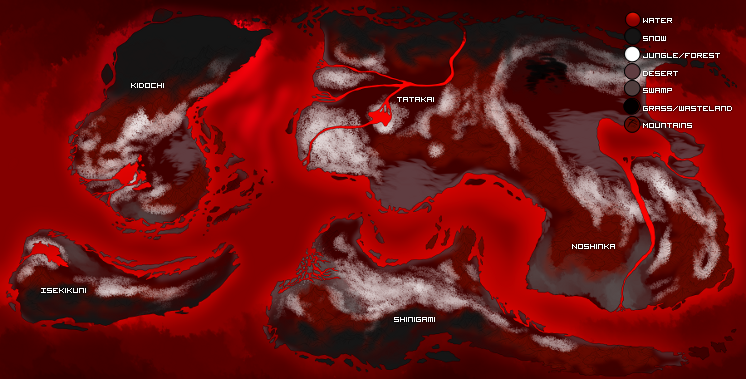
 = 650 leagues
= 650 leagues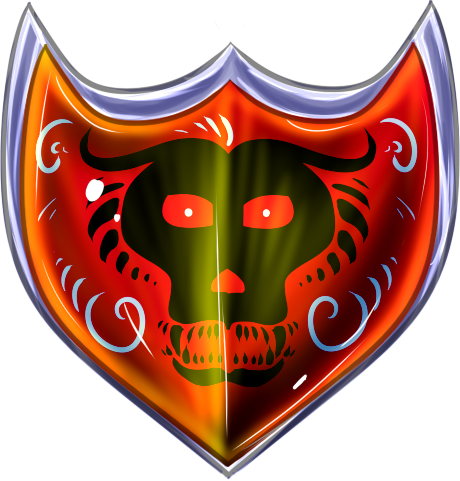
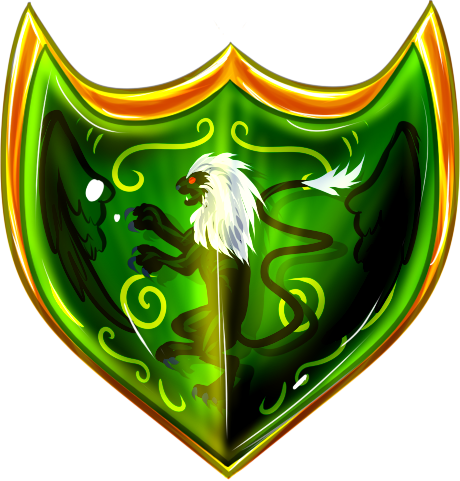
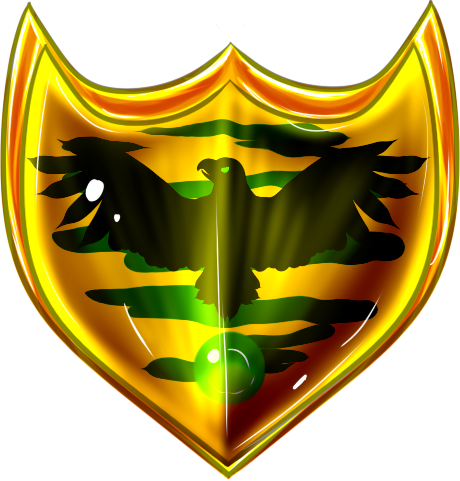
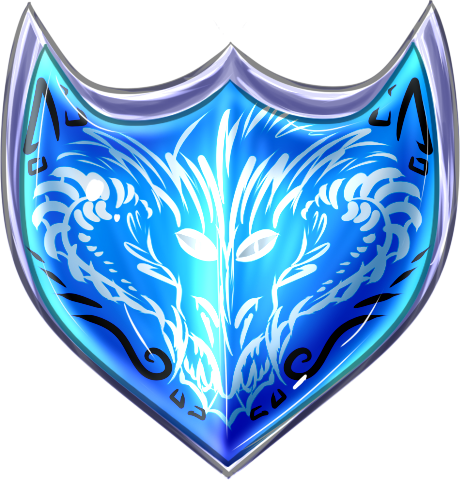


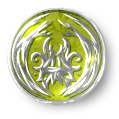 BRONZE: SH'GON (1z)
BRONZE: SH'GON (1z)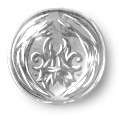 SILVER: SYEN (50z)
SILVER: SYEN (50z)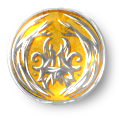 GOLD: SH'JIN (100z)
GOLD: SH'JIN (100z)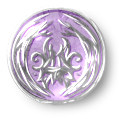 PLATINUM: SH'BO (150z)
PLATINUM: SH'BO (150z)
